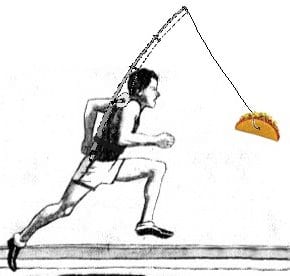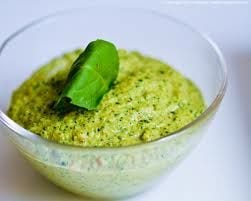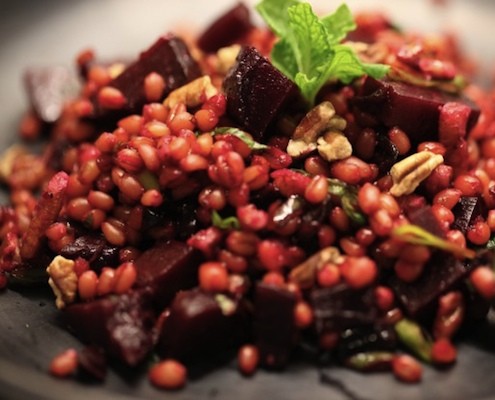Noah Charney is a best-selling author of fiction (The Art…
Ever wonder what is best to eat when engaging in aerobic exercise? We interviewed some experts to find out.
If you happen to see a flock of dozens of happy-looking runners just about anywhere along the idyllic stretch of south-central Europe, from Venice to Salzburg to Ljubljana to Zagreb, chances are good that you’ll find Urban and Jasmina Praprotnik at the head of the pack. Ljubljana-based journalists and professional running coaches, they lead running holidays, which I didn’t know were a “thing.” I’d heard of bicycling holidays: a tour provider arranges for your itinerary, accommodation and meals, as well as delivering your luggage, while you and a guide bicycle through the lovely countryside from one night’s destination to another. Well, turns out this exists for running enthusiasts, too.
I am decidedly not a running enthusiast. Running out of the house for a pizza is about as much as I can get excited for. But I recognize the necessity of aerobic exercise, and to permit those late-night pizza runs, I try to “jog”—on an indoor elliptical trainer—for thirty minutes a day. This will hardly qualify me for the next marathon, but I write about food, so I grew curious about what was recommended to eat prior to engaging in aerobic exercise? I’d heard about stocking up on carbs, but is that still the recommended approach? To find out, I decided to ask the Praprotnik family. Keep in mind, they are vegans, so their menus may be a bit different than most, but they know of what they speak, after years coaching runners and writing about sport. Jasmina even wrote the biography of an 86 year-old marathon running granny–and she finished a half-marathon while nine months and four days pregnant. If an 86-year old, and a nine-months-pregnant lady can do it, well…that doesn’t mean I can, but hat’s off to her!
 Image from the Food Marathon blog
Image from the Food Marathon blog
What sort of a diet do you recommend for those engaging regularly in aerobic exercise, such as running 5-6 times per week?
The balance is between the energy that we intake and the energy we consume. For example, in a 1 hour run, we consume between 600 and 1000 calories. If we prefer to sit still, in the same time we would consume only about 60. Thus, the daily energy consumption of an active person compared with an inactive one increases by approximately 30 to 40%. However, in maintaining our health on as high level as possible, we must consider not only the quantity of the energy intake, but also its quality. Is it in the form of simple or complex carbohydrates? Is there a sufficient portion of fat and proteins? Not to forget the vitamins, minerals, water and fiber. What we eat in our family is almost exclusively vegetables, legumes, seeds, nuts, fruits. We eat as much food as we feel we need. The emphasis is on need, not desire with over-sized eyes. In the end, this is very simple.
When training for a marathon, should calorie intake change as you train or be consistent throughout? What’s the ideal calorie intake for a male or female marathon trainer?
If you train for a marathon, it is clear that you train regularly. I recommend 3 to 4 running workouts per week. Other days are for our regeneration. During them, we should be active physically, but it is better that we don’t run. For a female marathon trainer, the ideal daily calorie intake should be around 2700, for men around 3300.
 Jasmina’s powerfood avocado spread
Jasmina’s powerfood avocado spread
What is a recommended menu to eat the day before a marathon? What about for breakfast on the day of the marathon?
Glycogen is the body’s sugar stored in the muscles and liver. These stocks, even if they are refilled also immediately before the start, are not sufficient to run a marathon at high speed. We have add sugar during the marathon. As much as two-fifths of runners during the marathon experience a glycogen deficiency, which we call “the crash into the wall.” So it is important that also the day before the marathon, we fill the glycogen stores. So let’s eat some more complex carbohydrates, like different grains and vegetables. Also on the marathon morning, it is important that we additionally fill the glycogen. For breakfast, for example, some oatmeal with raisins and other fruits, or even whole grain bread with marmalade and fresh fruits.
While running a marathon, how much liquid and how much snack food/energy supplements should you consume?
Unfortunately, since the 80s, the marketing of sports drinks has stressed the danger of dehydration excessively. It’s spread an unfounded fear of dehydration. Often runners’ fear of overheating is solved with drinking, but it is much better to spill water over your body. Some people have died during marathons, because they drank too much water and so reduced the concentration of sodium in the blood. The best advice is: During the marathon, drink as much as you are thirsty. It is wise to drink often, but little. And if we can choose, let’s have sweet drinks enriched with salts. Let’s also have some small snacks (pieces of chocolate, bananas, tangerines, energy gels) throughout the route of the marathon. It makes sense that, after the tenth kilometer, after each 5 km, we add about 3 to 5 g of sugar.
Are energy products really better than more natural beverages and snacks? Do they offer something extra, or is it mostly marketing?
There is no meaningful difference between the highly-advertised products and those which can be prepared at home with some sugar and a pinch of salt. The premade energy packages have the advantage that they come in convenient small packets, which are easier to carry with us. And there is also the important significance of the positive power of the placebo effect.

I once heard that most of us run incorrectly at a very basic level? Our shoulders are too far forward, we move our arms too much, and we step incorrectly. Is this true? What’s the correct posture and way to step?
Running is very natural. Yet it is true that about 90% of recreational runners run in a less-ideal way than they could. A good running posture is the one in which we try to be 1 cm taller, and we have our whole body tilted slightly forward. If we can do that we will step on the floor with shorter and quicker steps, which are essentials for an optimal running technique.
Noah Charney is a best-selling author and professor of art history. You can learn more about Urban and Jasmina Praprotnik by visiting their website.
Noah Charney is a best-selling author of fiction (The Art Thief) and non-fiction (Stealing the Mystic Lamb) and professor of art history. He is also an award-winning columnist, and writes regularly for a variety of magazines, including The Guardian, Esquire, the Atlantic and Salon. He lives in Italy and Slovenia. Join him on Facebook or at www.noahcharney.com




